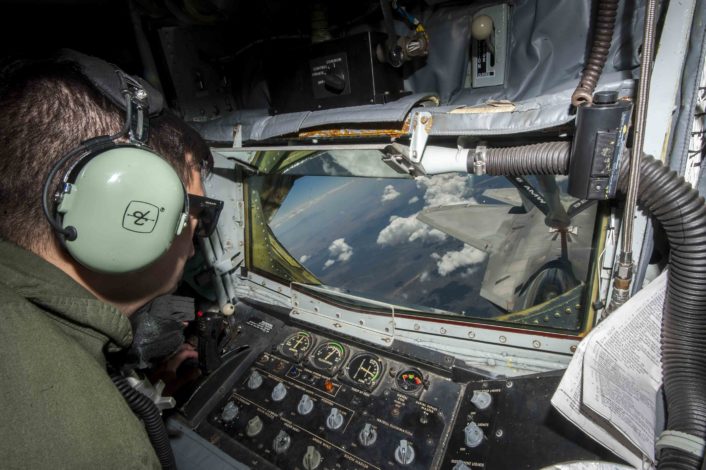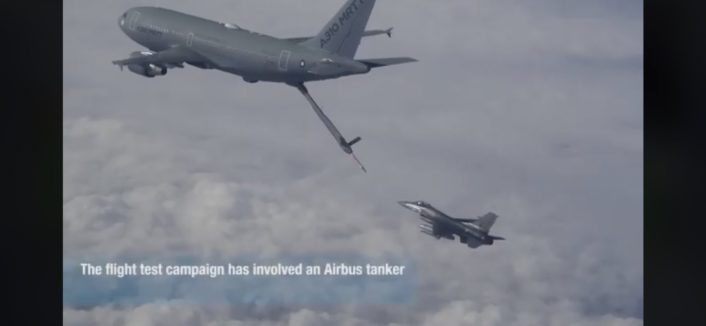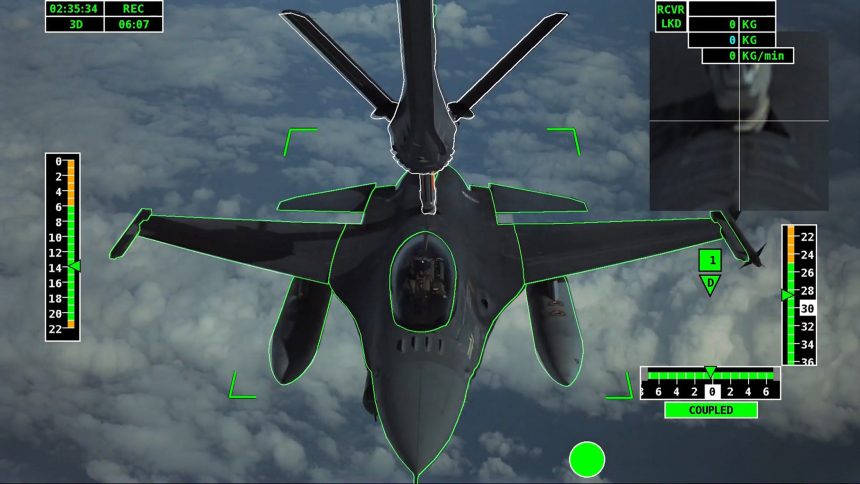The A330 MRTT will be equipped the first automatic aerial refueling with a boom system.
An Airbus MRTT test aircraft has successfully completed the first ever fully Automatic Air-to-Air Refuelling (A3R) operation with a boom system, Airbus has just announced. The milestone was achieved during a flight test campaign, conducted earlier in the year over the Atlantic Ocean, using an Airbus 310 MRTT test aircraft equipped with the Airbus A3R solution and a Portuguese Air Force F-16 jet acting as a receiver.
“This milestone is part of the industrialisation phase of A3R systems ahead of its implementation in the A330 MRTT tanker development,” says the official news release on the company website.
The testing campaign was made of 45 flight test hours and 120 dry contacts with the A3R system; the certification phase will start in 2021.
The way the A3R system operates is particularly interesting, as it gives a clear idea about the level of automation achieved in the field of the aerial refueling:
“The A3R system requires no additional equipment on the receiver aircraft and is intended to reduce air refuelling operator (ARO) workload, improve safety and optimise the rate of air-to-air refuelling transfer in operational conditions, helping maximise aerial superiority. The goal for the A3R system is to develop technologies that will reach fully autonomous capabilities.
Once the system is activated by the ARO, the A3R flies the boom automatically and keeps the alignment between the boom tip and the receiver receptacle with an accuracy of a couple of centimeters; the proper alignment and the receiver stability is checked in real-time to keep a safe distance between the boom and the receiver and also to determine the optimum moment to extend the telescopic beam to achieve the connection with the receiver. At this point, the fuel transfer is initiated to fill up the receiver aircraft and once completed and the disconnection is commanded, the boom is cleared away from the receiver by retracting the telescopic beam and flying the boom away to keep a safe separation distance. During this process, the ARO simply monitors the operation.”
This represent a significant development in the aerial refueling operations that involve the use of a flying boom a rigid, telescoping tube, maneuvered by a “boom operator” by means of a control stick. As opposed to the “hose and drogue” system this AAR system has the advantage to eliminate the requirement for the receiver pilot to plug the IFR (In Flight Refueling) probe into the hose’s drogue: once the aircraft has reached the refueling position the operator moves the boom to insert the tube in the receptacle of the receiver aircraft. The flying boom is the standard AAR system used by the U.S. Air Force and required by aircraft that are equipped with a receptacle (as the F-16, F-15 or the F-35).

Unlike the “hose and drogue” system with the flying boom, the effort of the AAR operation is mostly on the “boomer” (another nickname for the operator who moves the telescoping tube). In the previous generation tankers, as the U.S. KC-135 and KC-10, the boomer had to control the boom while lying prone inside a boom operator station located in the rear of the aircraft, watching the receiver through a rear observation window. More modern tankers, as the KC-767 and the problematic KC-46, use a remote boom operator’s station located behind the cockpit from where boomers move the boom using a joystick and watching the video from a series of cameras mounted on the tanker’s fuselage: the advanced camera system feeds a Remote Vision System (RVS) that provides high-definition stereoscopic imagery to the vision goggles attached to a sort-of flight helmet worn by the boomer during the air-to-air refueling.

That said, the A3R systems, like the one being developed by Airbus for the successful A330 MRTT, will probably be the reference for future refueling operation aboard manned tankers.
Note: a previous version of this article stated that the aircraft involved in the test was an A330 MRTT. Actually, Airbus news release didn’t specify the aircraft type (it refers to a generic MRTT test aircraft) but a reader spotted in a video that the test article involved in the test was an A310MRTT.










